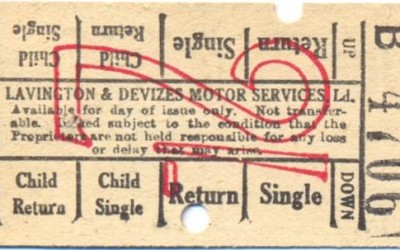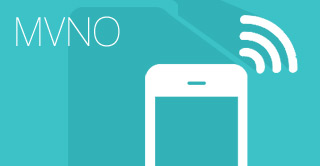Mergers and acquisitions, what’s the success factor?
Prepare to be assimilated with Virtual Reality
Mobile is everything. Prepare to be assimilated, monitored and connected wirelessly and at high speed.
Having returned from Barcelona, the three key themes of this year’s Mobile World Congress appeared to be virtual reality (VR), the Internet of Things (IoT) and 5G. As well as the amazing number of Chinese and French (yes) smartphone manufacturers.
No self-respecting stand was without one or more VR headsets. Leading the charge: Samsung’s huge day one launch, and people queuing to take in the experience on SK Telecom’s yellow submarine adventure, or practice their downhill skiing with the GSMA. The link? The increasing power of smartphones to provide a fully immersive environment, especially for gaming.
IoT also appeared everywhere, with Nokia, Intel, GSMA and others promoting the opportunities associated with connecting things to the Internet – though the non-machine-to-machine use cases and the commercial models all seem tenuous at present. Having said that the LoRa Alliance recognises the need to standardise inter-operability for low-power devices if this market is to take off.
The live demos of pre-standard “Narrowband-IoT” Low Power Wide Area (LPWA) networks using long range, low bandwidth (sub 384kbps) Extended Coverage GPRS and separately LTE were impressive. And Vodafone Spain is already trialing connected water meters with coverage even possible underground
And from low speed to high speed 5G and the next “big thing”, many stands were making the pitch for the benefits of high-speed, low latency, bandwidth able to inter-operate with Wi-Fi for enhanced coverage and throughput. Though one wonders how the industry will deliver the necessary backhaul cost effectively.
Mind you we’re going to need this bandwidth once we’re all assimilated by VR.
Smart ticketing. It’s very smart.
Manchester in the 19th Century, picture the scene. You are fortunate enough to be able to travel by train, so arrive at the station to buy your ticket. You complete your purchase and are handed a piece of paper (or card) that verifies your travel details.
Manchester, the 21st Century. You need to travel by train, however, the operator you are traveling with doesn’t yet offer mobile ticketing, so you head to the ticket office to buy your ticket. This is commonplace for the majority of the journeys you choose to make.
Switch travel method from train to bus, and still, little has happened. Almost 150 years separate the scenarios, and despite much happening with advent of modern technology, little appears to have changed.
However, the experience is set to be transformed.
We are on the cusp of seeing some of the most progressive changes in the transport sector that will close this centuries old gap, and bring a next generation to our experience of travel.
We’re not talking Marty McFly and hover boards or James T Kirk and teleporters. We’re talking cashless, contactless, ticketless transit.
Over recent years, Transport for London has embraced the concept of “contactless” and over the past two years the paper ticket has been visibly on the decline, as has the wildly revered Oyster card.
With Transport for London responsible for 11% of all contactless transactions in the UK, there is a clear appetite for cashless travel and visitors to the capital are clearly fans.
The advent of contactless payment and the inherent trust that is growing in simply tapping and paying, means the transport sector is now preparing for its own revolution.
A collaborative project involving the UK Cards Association, the main bus operators, and the Rail Delivery Group (which represents Network Rail and rail operators), is looking at taking the well-known system now famous across the Transport for London network (overground, underground, buses, boats, cable cars and bikes), and creating a blue-print for the revolution of public transport across the country.
In essence your contactless card (or maybe even payment enabled mobile device) plays the role of ticket and payment method. No ticket necessary, just the data link between your attributes, your bank account and your journey.
But what are the implications for all of the associations of travel? Does it spell the death knell for the supporting cast of station stores and eateries? We think not.
The behavioural change of trust and usage of contactless will prompt further growth. And with a halo effect that promotes travelling without cash, barriers are removed and the end-to-end travel experience far slicker.
Transport, particularly public transport, is very rarely recognised for its innovation. However, with both public and private sector gunning for a ticketing revolution, the prospect of jumping on a bus at John O’Groats and hopping off a train at Lands End with nothing but a piece of plastic as your travel companion, is not as far removed as you might think.
This is, after all, the 21st Century
Apple MVNO, the final frontier?
Recent industry chatter has once again raised the topic of owning the customer relationship Vs owning the infrastructure that sits behind the service.
I am of course referring to Apple. Sources close to the organisation say the company is privately trialing an MVNO service in the US, in addition to being in talks with telecoms companies in Europe about bringing the service there too.
Tech Change Infographic
The last decade has heralded the arrival of some true technology pioneers. In the same breath, it has bid farewell to some trailblazers who, in their day, were just as pioneering.
The MVNO Value-Add
Piran Partner’s Erick O’Connor looks to the future of the MVNO market and the trends that are creating opportunities for the sector.
“Enterprises are now beginning to invest in dedicated mobile phones for their employees despite the advent of Bring Your Own Devices (BYOD). Security concerns and the need to control company sensitive information means that for IT managers there is value in controlling your own devices.
MVNOs – a snapshot and the opportunities
Where do the challenges lay in the MVNO market?
All successful MVNOs share a number of common traits: a deep understanding of their customers, a focus on costs, plus ownership of the key customer ‘touchpoints’ allied to a viable network partnership model.
However the new ‘big name brand’ entrants into the market – Google in the USA, Sky in the UK and freemium models such as offered by FreedomPop – will stir-up the market putting pressure on ARPUs. This in turn will force existing MVNOs to place an even greater emphasis on their propositions and delivery capabilities.
Big is beautiful but smart is better. We’re talking data, of course
By Scott Gibson
Every day, we create 2.5 quintillion bytes of data. The thought of that scale can send a chill down many a spine.
So many sources, so many permutations, so many outcomes…so much data waiting to be turned into knowledge, insight and facts.
Piran Partners: 10 years of business, 10 years in the blink of an eye.
In the blink of an eye, technology is moving forward at an ever increasing rate.
From theory to concept, from the first Turing-complete digital computer in 1946, to that reprogrammed to look for the answer in “a large class of numerical problems”.
Whichever way you look at it, technology has helped us focus outside of our own planet to the moon and beyond. It has come so far in the blink of an eye, arguably with more evidence in support of a theory that it is now outstripping even this minute and rapid movement.
Where next for MVNOs?
MVNOs have been successful in unlocking underserved markets segments and offering choice and innovation to customers. Today there are over 1000 MVNOs serving approximately 138 million customers. But worldwide, and especially in the mature markets, they are under real pressure. Is the traditional single-play MVNO a sustainable model for the future?
Presentation given at Field Fisher, Telecoms Intensive, March 2015.
Sky to launch new MVNO in the UK with Telefonica
Sky has confirmed its adding mobile to its current product mix in the UK, launching an MVNO with O2 in 2016.
The challenges facing mobile operators worldwide
Mobile operators have been tremendously successful in providing voice and data services to people worldwide over the last 20 years, but they now face significant commercial, operational and competitive challenges, not just in the mature markets of Europe and North America. What are these challenges and how should they respond in the coming decades?









